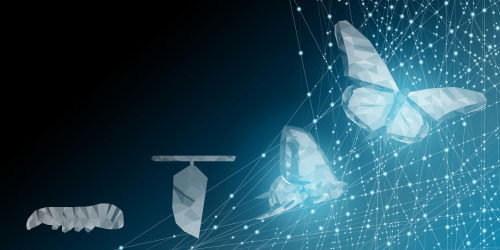Innovation: Definition, types of innovation and business examples
What is innovation? How many types of innovation are there? Can there be innovation outside of the business world? Is innovation the same as an invention? And what are the good examples of innovation on business? Let’s find out.
Mục Lục
What Is Innovation?
The Oslo Manual, an international reference guide from the OECD for collecting and using data on innovation, defined the concept of innovation as:
“(…) a new or improved product or process (or a combination thereof) that differs significantly from the unit’s previous products or processes and that has been made available to potential users (product) or brought into use by the unit (process).”
Different Types Of Innovation
According to the 4th and most recent edition (2018) of the Oslo Manual, there are four main types of innovation:
Organizational Innovation

Organizational innovation refers to the development of a new organizational strategy that will somehow change a company’s business practices, as well as the way its workplace is organized and its relationship with external stakeholders.
- Examples of organizational innovations:
- The first companies adopting a four-day week working schedule of only 4 days per week
- The first companies that started to use the power of digital and allowing employees to skip the office and work from home (depending on the role)
Process Innovation

Process innovation is about implementing a new or improved production or delivery approach, including changes in operational methods, the techniques used and the equipment or software.
- Examples of process innovations:
- The first firms betting on SaaS (software as a service) technology, and using, for instance, cloud contact centers from Talkdesk, changed the way their customer support processes used to be organized
- The first hotels that decided to make decisions based on big data using, for instance, insights from the Climber Hotel, made changes on their decision-making approach
Product Innovation

Product innovation is the introduction of a new or improved good or service. These inventions or changes may have to do with improving technical specifications, the materials or the software used or even advancing on UX (user experience). However, product innovations don’t need to improve all functions or performance specifications. An improvement to or addition of a new function can also be merged with a loss of other functions or the downgrade of some other specifications.
Moreover, a product innovation must add available to potential users but doesn’t necessarily need to generate sales. Because if it did, then innovations with low demand or, for instance, digital products like apps that are free would be excluded. At the same time, routine changes or updates aren’t considered product innovations as they are only correcting errors or making some seasonal changes.
- Examples of product innovations:
- Lego has been changing the materials of its famous bricks to biodegradable oil-based plastics
- The first electric vehicles introduced in the car’s market were also an innovation, and new batteries with longer ranges that keep coming out are also an example of innovation
Marketing Innovation
xfpe
Marketing innovation means developing a new marketing strategy that produces changes in, for instance, the way a product is designed or packed, or even other decisions regarding price or promotion.
- Example of marketing innovation:
- Haagen Dazs’ new waste-free container
Eco-innovation And The Sustainability Approach: A 5th Type Of Innovation:
(The following definition was written based on the UN Environment and the European Commission own definitions)
Eco-innovation is an innovation resulting in significant progress towards the 2030 goals sustainable development established by the UN. In practice, it means reducing the impacts of our production modes on the environment, improving nature’s resilience to environmental stresses, or achieving a larger efficient and responsible use of natural resources.
In this way, we can say eco-innovation may create value in two different areas. First, from a sustainable development perspective, as it promotes sustainability throughout a product’s entire life cycle, it helps to address challenges such as climate change, resource scarcity, and biodiversity. Second, it can also boost a company’s performance and competitiveness. By embracing new and greener processes, technologies and services, eco-innovation can help organizations access new markets, increase productivity and profitability across the value chain, strengthen their reputation or attract new investors.
- Examples of eco-innovations:
- A while ago, Procter and Gambler realized householders could save on their electricity bill by switching to cold-water washings and started developing cold-water detergents (product innovation)
- As part of its sustainability strategy, IKEA is changing its fleet to electric vehicles (process innovation)
- Nestle’s new paper-based straws as an alternative to plastic straws (marketing innovation)
- The first companies concerned with the sustainability of their operations that decided to change their suppliers and partners if they don’t prove they are also making efforts to become more sustainable (organizational innovation)
Check the video that follows to better understand the concept of eco-innovation:
What Is Innovation In Business?
According to the Oslo Report, business innovation is:
” (…) a new or improved product or business process (or a combination thereof) that differs significantly from the firm’s previous products or business processes and that has been introduced on the market or brought into use by the firm.”
Innovation Is Not Only Business-applied
Nonetheless, innovation isn’t just about business. It’s a dynamic process that needs implementation, i.e. that something is put into active use or made available, but it can take place in all sectors of an economy. In fact, it can happen, according to the UN System of National Accounts (SNA), in four broad sectors of an economy: businesses, the general government, households, and NGOs serving households. But how exactly?
- Innovation in businesses consists of organizations that are mostly oriented towards the production of market goods and services.
- Innovation in the general government consists of institutional units with political and regulatory responsibilities. They redistribute income and wealth, as well as some services and goods, for individual and collective consumption, usually on a non-market framework.
- Households are institutional units made of one or more people. Their main purpose is to supply labor, undertake final consumption and eventually, as entrepreneurs, to produce goods and services too.
- NGOs serving households are legal entities mostly engaged in producing non-market services for households or the community. Their resources and manpower are the results of voluntary contributions.
Innovation Is More Than Creating: It’s Also A Destructive Process
Schumpeter (1934) brought into discussion several arguments on how businesses search for new opportunities and competitive advantage. One of his most famous arguments has to do with the concept of “creative destruction”. In Schumpeter’s vision, capitalism is a dynamic and innovative market system that is constantly changing. These changes, he says, happen because of new ideas and processes that take over the current paradigm (status quo) and create new ways of producing goods, services or entirely new industries.
The claims destruction and imbalance are what makes capitalism develop and grow, and not the usually accepted idea of economic equilibrium. In this way, the Austrian economist calls this imbalance “creative destruction” because innovation often leads to market chaos: for instance, products get obsolete, companies close and people get unemployed. Still, he believes these are necessary consequences for new solutions that increase life quality to come to light.
We’ve been watching these examples of creative destruction across humankind’s history. We’ve gone over the first industrial revolution to the boom in using petroleum and we today we are a highly technological society of information. These periods of innovation make the old models obsolete and create the need for everyone and everything to innovate – and the transformation is drastic.
From a business perspective, only companies with a great strategic vision survive an episode of creative destruction. Companies like Nokia and Kodak, that were once market leaders in their own industries, failed to see how the cellphone and photography industries would change. At the same time, from a sustainability strategy, as we’ve discussed upper on this article, companies making radical changes and developing true sustainability strategies (from managing waste in a circular way to using renewable energy) will probably be the ones thriving in the future.
Innovation And The System’s Perspective
According to the Oslo Manual, the systems perspective of innovation is about examining the interdependencies among actors. As the innovation path has uncertain outcomes and follows a complex and non-linear approach, the systems perspective is a multidisciplinary and interdisciplinary one. This means innovation systems can be connected by industry, geography or technology and are many times interrelated.
According to the OECD, systems perspectives are used to create innovation policies that coordinate system transformations in society. From the decarbonization of transportation systems to the improvement of the education system in teaching coding, these transformations require different actors, from producers to consumers, to work together and ensure that all the complementary components of a complex network are in place. For instance, following Oslo Report’s example, for producers to develop their range of electric cars, more people need to buy from this segment and a network of charging stations need to be created as well.
Other Curiosities About The Process Of Innovation
- Innovation is a continuous learning process with several inputs. It’s not a linear or sequential process as it involves many interactions and feedback.
- A prototype or idea of a product that does not yet exist is in general not a product innovation as it doesn’t meet the implementation requirement. This condition of putting into use or making available for the use of individuals, firms or other organizations is what differentiates innovation from other concepts like “invention”.
- The economic and social impacts of ideas and innovative changes depend on the diffusion and uptake of related innovations
Examples Of Famous Innovators
- Steve Jobs starting developed the smartphone world with the iPad
- Marie Curie made great researches on radioactivity
- Elon Musk has been making great progress on luxurious electric cars
- Ann Kiessling made plenty of findings on the area of biology
- Nikola Tesla worked on the production, transmission, and application of electric power
- Amanda Jones was the inventor of a vacuum method of canning
- Thomas Edison invented the incandescent electric light bulb
- Grace Hopper invented the first compiler for a computer programming language
- Leonardo DaVinci, among many other things, invented the parachute
- Josephine Cochrane invented the first mechanical dishwasher
- Alexander Graham Bell invented the first telephone
Image credits to organization meeting on Shutterstock, innovation technology on Shutterstock, creative bulb on Shutterstock, idea innovation on Shutterstock, prototype on Shutterstock, package idea on Shutterstock and destruction on Shutterstock















![Toni Kroos là ai? [ sự thật về tiểu sử đầy đủ Toni Kroos ]](https://evbn.org/wp-content/uploads/New-Project-6635-1671934592.jpg)


